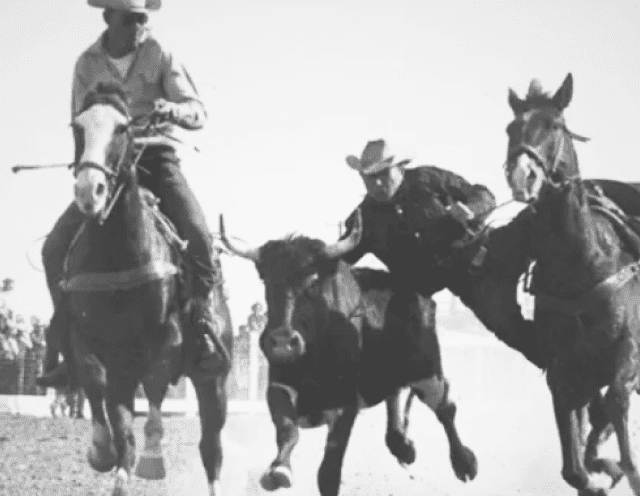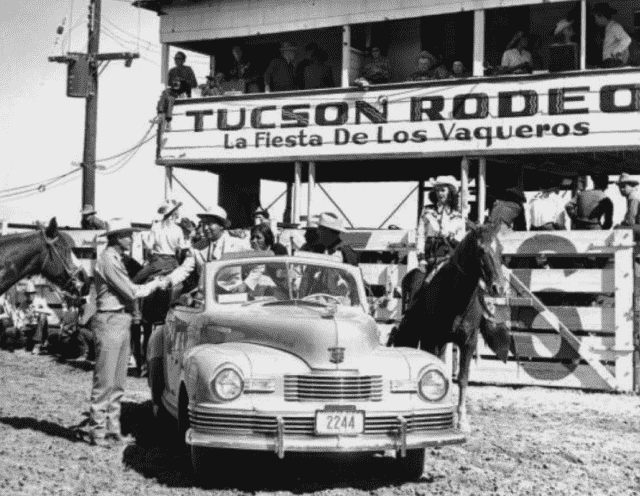ABOUT THE RODEO
CELEBRATING 100 YEARS OF TUCSON TRADITIONS
Tucson's La Fiesta de los Vaqueros, established in 1925, marked the city's frontier spirit amidst Prohibition. Arizona State Prohibition Director Frank Pool led a pre-rodeo cleanup, capturing 25 stills and destroying 3000 gallons of moonshine. The inaugural event, conceptualized by Leighton Kramer, aimed to showcase Tucson's Wild West allure and attract winter visitors.
The rodeo's early days saw creative prizes like a 750-lb. block of ice and a "Big Cactus" ham. Kramer's vision of reviving the Old Frontier spirit was realized as locals and tourists alike enjoyed the rodeo parade and dance. The event's success led to its expansion, with Hollywood even using the Tucson Rodeo as a backdrop for films. Today, the Tucson Rodeo stands as one of North America's top professional rodeo events, with the Tucson Rodeo Committee honored for its contributions to the sport.


WE TAKE PRIDE IN OUR HISTORY
The first Tucson Rodeo, held at Kramer Field (now Catalina Vista), featured steer wrestling, steer tying, calf roping, and saddle bronc riding, with a purse of $6,650. Special events included a wild horse race and Jack Brown bulldogging a steer from a Packard automobile. Kramer praised Tucson's Rodeo Parade as being as notable as Mardi Gras or the Pasadena Flower Show.
Due to rapid growth, the event moved to South 6th Avenue and Irvington Road in 1932, with seating for 3,000. Today, the arena accommodates 11,000 spectators. The rodeo expanded to six performance days in 1993 and has featured renowned entertainers like Montie Montana and Rex Allen. The Tucson Rodeo continues to celebrate western heritage with its rich history and ongoing tradition of excellence.
